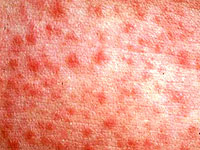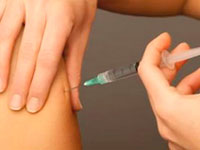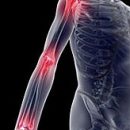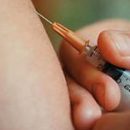Skin difftheria - the disease is quite rare, more often occurring in children. What is skin diphtheria, determining the diagnosis, the difference from other diseases with eczematous manifestations is all in our article.
Content
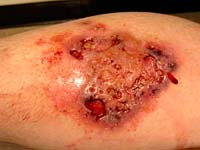 Difteria skin causative agent — Klebsa-Lefler Bacterry, known for its ability to produce exotoxin and, sucking into blood, lead to the development of tissue necrosis with the formation of diphtheria ulcers covered with a layer of fibrin. Diphthery, the transmission path of which is mainly contact, leads to acute inflammation and the appearance of infiltrate in the dermis. The disease is usually manifested by two forms as surface or as deep diphtheria, while the skin in different places can react differently to the attachment of diphtheria infection. Foci of the disease are localized on their hands, legs, head and torso, and the more their area, the heavier the course of the disease.
Difteria skin causative agent — Klebsa-Lefler Bacterry, known for its ability to produce exotoxin and, sucking into blood, lead to the development of tissue necrosis with the formation of diphtheria ulcers covered with a layer of fibrin. Diphthery, the transmission path of which is mainly contact, leads to acute inflammation and the appearance of infiltrate in the dermis. The disease is usually manifested by two forms as surface or as deep diphtheria, while the skin in different places can react differently to the attachment of diphtheria infection. Foci of the disease are localized on their hands, legs, head and torso, and the more their area, the heavier the course of the disease.
Forms of the disease
- Surface form — This is the layering of infection on various, already existing, dermatoses, for example, an eczematosis option, is more often observed in children in the field of face or ear folding.
- Deep form of diphtheria — more severe disease with damage to the field of genital organs in girls and women, with shared inxication phenomena diphtheria toxin, which can lead to paralysis, polyneurite and other complications. In addition, such deep-shaped options, as phlegmonous and gangrenous, are characterized by a very slow course, painful healing of wounds and the subsequent formation of scars.
Diphtheria: Symptoms and Treatment
 The beginning of the disease is acute, infection occurs in various ways, more often by transferring diphtheria sticks through direct contacts or infected objects. Especially often contact paths of transmission of disease are celebrated in tropical countries.
The beginning of the disease is acute, infection occurs in various ways, more often by transferring diphtheria sticks through direct contacts or infected objects. Especially often contact paths of transmission of disease are celebrated in tropical countries.
Symptoms of diphtheria are characterized by the appearance of gray-white or greenish plaque on the skin, an increase in lymph nodes, their seal and soreness. Diffmerity ulcers are formed with clear round, sometimes oval outlines, with painful towering edges, limited bluish rim. The state of intoxication is expressed in increasing body temperature, weakness, headache and nausea. The disease is usually manifested in the form of non-healing chronic ulcers covered with gray films. The development of the most severe forms is possible with late diagnosis and late introduction of PDS — Anti-diamier serum.
Treatment of diphtheria, the symptoms of which are manifested by 5-7 days after infection, implies the mandatory bed mode and the immediate administration of anti-informy serum. Diphtheria, in which the transmission paths are mostly contact, requires treatment in an infectious hospital with strict insulation of the patient. For effective therapy, it is necessary as early as early as possible administration of antitoxic serum, antibiotic therapy, disintellation, as well as the treatment and prevention of possible complications that require a separate discussion.
Diphtheria — Successful diagnosis
 Sometimes the definition of the diagnosis is complicated by the external similarity of the diseases of the disease with psoriasis, dermatosis, contact dermatitis, hemorrhagic rash of obscure origin. The main method of diagnostics then laboratory sowing and bacteriological research.
Sometimes the definition of the diagnosis is complicated by the external similarity of the diseases of the disease with psoriasis, dermatosis, contact dermatitis, hemorrhagic rash of obscure origin. The main method of diagnostics then laboratory sowing and bacteriological research.
In diphtheria, the definition of a favorable outcome and successful treatment depends on the timely use of anti-dieminine serum neutralizing diphtheria toxin. After transferring infection, immunity is formed unstable, there is an opportunity to get sick again after 10 years, but the course of re-illness is much easier than for the first time.
Prevention of the disease
- Detection of sources of contamination of diphtheria, the transmission paths of which is most likely a contact method for this form of the disease.
- Timely hospitalization and mandatory disinfection in the apartment where the patient was insulated with patients infected with patients, ban on visiting children's institutions, bacteriological 2-fold study for bacteridation with a 2-day interval.
- And finally, the main method of prevention — Vaccination and revaccination when vaccinations are made all necessarily without waiting for diphtheria with its characteristic symptoms.



